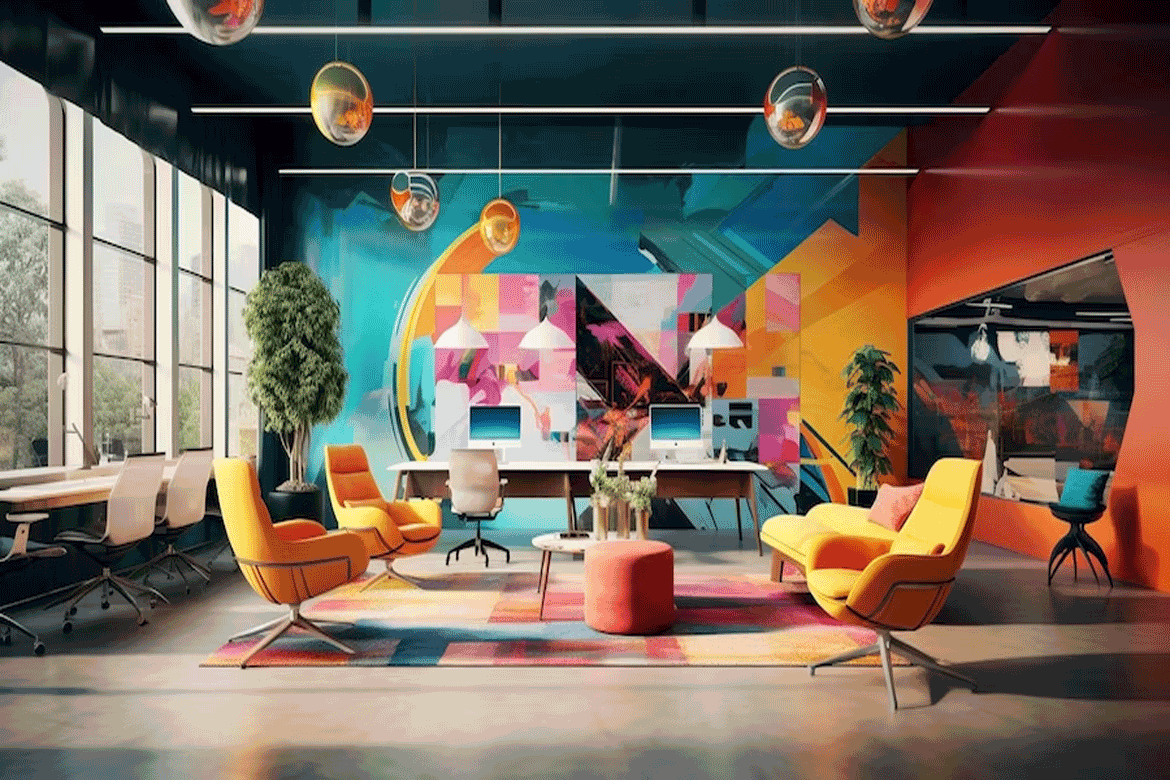Over time, commercial space design has evolved considerably in the business world. Gone are the days of drab, fluorescent-lit cubicles that represented a dreary work atmosphere. Instead, modern office design values flexibility, collaboration, and a strong concern for employees’ well-being. This essay digs into how disruptive trends are transforming commercial spaces to promote productivity, creativity, and safety.
The evolution of workplace design: from cubicles to open spaces
Modern Workplace Design
The change of workplace design in recent decades has resulted in a dramatic shift in our understanding of work-life balance and employee productivity. Early workplace designs prioritised space efficiency over employee satisfaction, resulting in the widespread use of cubicles. However, contemporary design trends have changed towards open spaces that promote employee collaboration and communication. This shift reflects a more comprehensive understanding of how environmental elements like light, space, and layout directly affect worker productivity and morale.
Integrating Flexibility and Collaboration into Office Layouts
Modern workplaces prioritise adaptable layouts that can accommodate a variety of work styles and functions. This adaptability extends beyond the physical arrangement of furniture to the incorporation of technology that facilitates remote and hybrid work methods. For example, movable dividers, adjustable lighting, and ergonomic furniture meet the changing needs of today’s workforce. Furthermore, open workplaces and communal areas are intended to encourage cooperation, reflecting the growing importance of teamwork in fostering innovation and creativity.
Biophilic design improves employee well-being in modern workplaces.
Biophilic design, which incorporates natural elements into the workplace, has gained popularity due to its favourable effects on employee well-being and productivity. Natural sunlight, indoor plants, water features, and materials with natural textures can help to relieve stress, increase creativity, and improve air quality. These design ideas recognise the intrinsic human connection to nature and seek to build healthier, more lively workplaces that improve morale and job satisfaction.
Innovative Materials and Construction Techniques for Modern Workspaces
The utilisation of new materials and building processes is critical in designing modern workspaces that are aesthetically beautiful, environmentally sustainable, and safe. Materials like recycled glass, recovered wood, and low-VOC (volatile organic compounds) coatings help to improve interior air quality while lowering the environmental effect of new builds. Similarly, developments in construction techniques have resulted in more efficient and safer building processes, reducing the occupational dangers connected with commercial projects.
Prioritising Safety in Commercial Construction Projects and Modern Workplace Design.
Safety is a top priority in the building and design of modern workspaces. This includes both physical safety during the construction process and the long-term well-being of the building’s tenants. Designers and architects must be diligent in following construction laws and regulations that control safety requirements. Furthermore, awareness of construction site risks is critical for preventing accidents and providing a safe working environment for all concerned.
The Impact of Technology on Future Workplace Designs
Technology is important to the future of workplace design, providing solutions that improve efficiency, safety, and employee engagement. Smart building technologies, for example, automate climate management, lighting, and security systems to make spaces more comfortable and energy efficient. Furthermore, digital collaboration tools and platforms enable seamless communication between remote and on-site personnel, resulting in a more connected and productive workforce. As technology evolves, its incorporation into workplace design will definitely expand, influencing how we work and interact in commercial environments.
Sustainability and Efficiency in Modern Commercial Architecture
Modern Workplace Design
Sustainability is no longer a catchphrase, but rather a basic idea that governs current commercial construction. This shift towards eco-friendly design techniques emphasises the importance of energy-efficient buildings that use renewable resources and produce less trash. Commercial facilities are becoming more sustainable in a variety of ways, including energy-efficient HVAC systems, solar panels, and green roofs. Beyond the environmental benefits, these techniques result in significant long-term cost savings, making sustainability a wise investment for the future of commercial design.
The modern workplace is undergoing a fundamental revolution, fueled by shifts in work culture, technological developments, and a greater emphasis on employee well-being and sustainability. As we move forward, the themes discussed in this article will continue to affect commercial space design, making it more versatile, efficient, and favourable to productivity and creativity. The workplaces of the future, which prioritise flexibility, collaboration, and safety, promise to be environments where creativity thrives and employees feel valued and inspired.
